#Diane de France
Text

Last of their name
#house of valois#french history#charles ix#henri iii#françois d'alençon#marguerite de navarre#claude de france#elisabeth de france#diane de france#françois II#la reine margot
1K notes
·
View notes
Photo






↳ the children of Henri II of France (including illegitimate)
(requested by anonymous)
#henri ii#catherine de medici#francis ii#charles ix#henry iii#maragret of valois#diane de france#elizabeth of valois#claude of valois#house valois#french history#historyedit#requested#my gifs#*requests#creations*#catherinemediciedit
271 notes
·
View notes
Photo
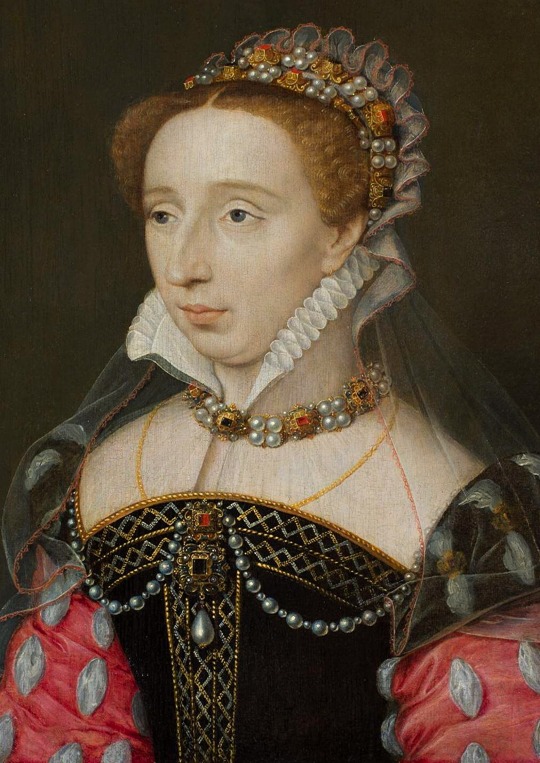
Portrait of Diane de France, princess of France and daughter king Henry II of Valois. By François Clouet.
#François Clouet#royaume de france#maison de valois#diane de france#royal bastards#princesse de france#fils et filles de france#légitimés et légitimées de france#légitimée de france
22 notes
·
View notes
Photo



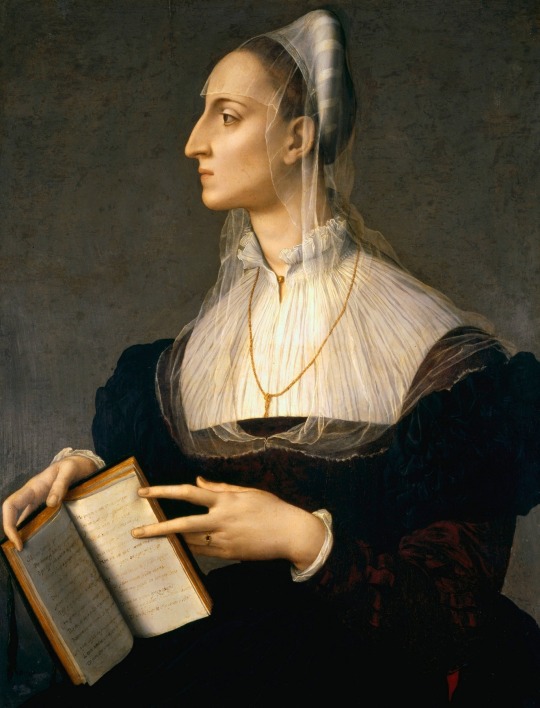





Touring the 1500s -
Top left 1525 Laura Pisani by Gabriele Cappellini (location ?). From tumblr.com/eirene; partially fixed.
Top right Diane de France, princess of France and daughter king Henry II of Valois by François Clouet (location ?). From tumblr.com/roehenstart/695196156597256192/portrait-of-diane-de-france-princess-of-france; fixed spots, but not cracks w Pshop 2048X2894.
Second row left Woman by ? Musée des Beaux-Arts de Dijon - Dijon, Côte-d'Or, Bourgogne-Franche-Comté, France). From tumblr.com/blog/view/history-of-fashion 597X800 @72 208kj.
Second row right 1550s Laura Battiferri by Agnolo Bronzino (location ?). From tumblr.com/blog/view/papered-in-rose-toile 1370X1795 @72 677kj.
Third row Woman by Florentine painter, possibly Jacopo Zucchi (Metropolitan Museum of Art). From tumblr.com/historical-fashion-devotee/700705910778216448/artthatgivesmefeelings-florentine-painter; fixed spots & cracks w Pshop 2015X2615 @72 1.5Mj.
Fourth row left 1545-1550 Lady, probably Philippine Welser, probably by Corneille de Lyon (Veste Coburg - Coburg, Bayern, Germany). From tumblr.com/blog/view/lenkaastrelenkaa fixed spots $ some cracks w Pshop 828X1200 @72 482kj.
Fourth row right ca. 1565 French Princess by the school of François Clouet (Morgan Library & Museum - New York City, New York, USA). From tumblr.com/dashboard 1078X1445 @72 665kj.
Fifth row lef. 1570 Probably Camilla Martelli by Alessandro Allori (St. Louis Art Museum - St. Louis, Missouri, USA). From tumblr.com/pipouch/696978340783030272/alessandro-allori-portrait-dune-dame 1741X2048 @72 1.3Mj.
Fifth row right Jungen Frau by Nicholas Hilliard (Bassenge - 1Dec22 auction Lot 6038). From their Web site 1070X2498 @144 7.6Mp.
#1500s fashion#Renaissance fashion#laura pisani#Gabriele Cappellini#straight hair#jeweled turban#partlet#V neckline#square neckline#French sleeves#François Clouet#Diane de France#jeweled headdress#high neckline#neckline ruff#crescent neckline#rolled sleeves#puffed cloth ornaments#jeweled hat#clerical neckline#long close sleeves#Laura Battiferri#Agnolo Bronzino#veil#Jacopo Zucchi#jeweled girdle#Philippine Welser#Corneille de Lyon#Camilla Martelli#Alessandro Allori
7 notes
·
View notes
Text
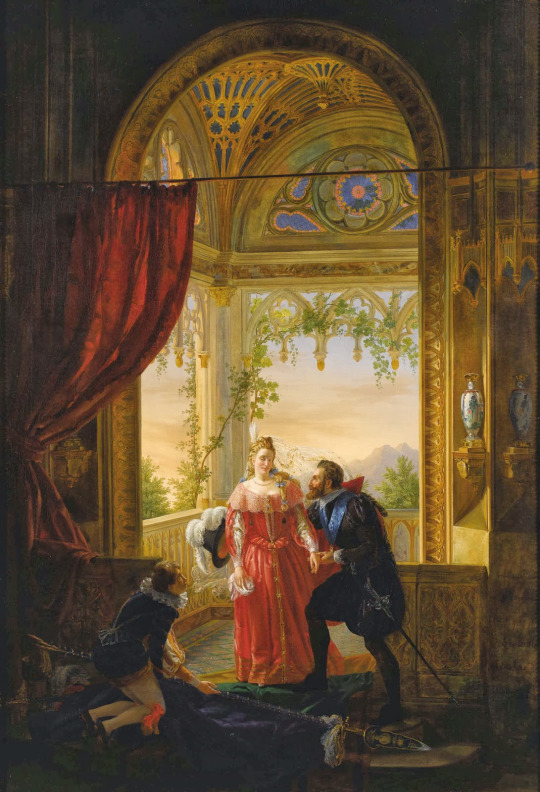
Henri IV with his Mistress by Louis-Nicolas Lemasle
#henri iv#art#louis nicolas lemasle#henry iv#king#france#french#henry of navarre#captured#flags#flag#standard#battle of coutras#troubadour#europe#european#history#diane d'andoins#countess of gramont#comtesse de gramont#architecture#countess de gramount#henry iii#navarre#henri iii#french religious wars#royal#huguenots#huguenot#royalty
67 notes
·
View notes
Photo
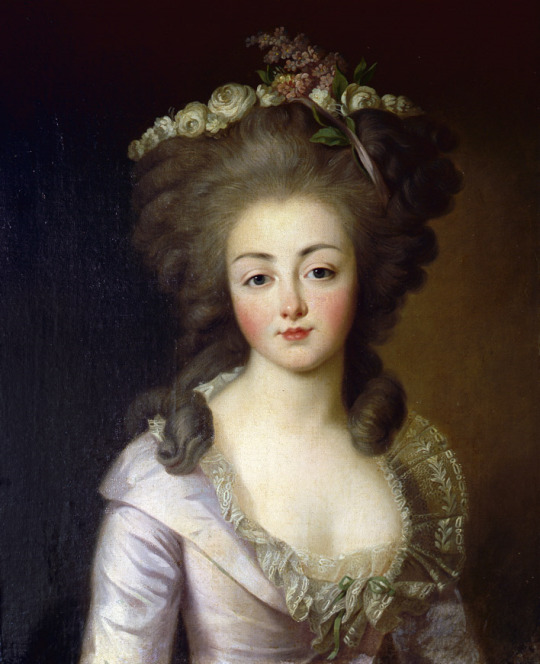
François-Hubert Drouais (French, 1727–1775)
So-called Portrait of Diane Louise Augustine de Polignac (1746-1818), sister-in-law of Yolande de Polastron, c.1780-95
Collection Gramont
#François-Hubert Drouais#diane louise augustine de polignac#art#fine art#fine arts#classical art#french art#french#france#mediterranean#royal#noble#nobility#royalty#female portrait#female#portrait#women in art
149 notes
·
View notes
Text



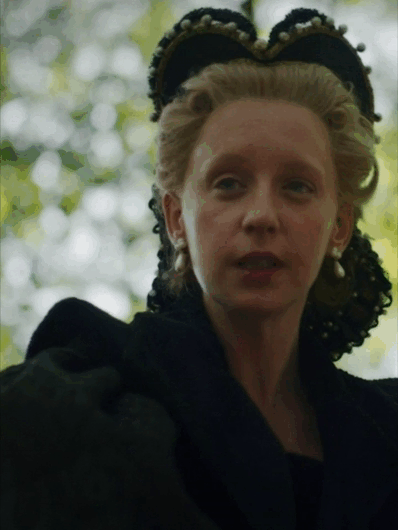

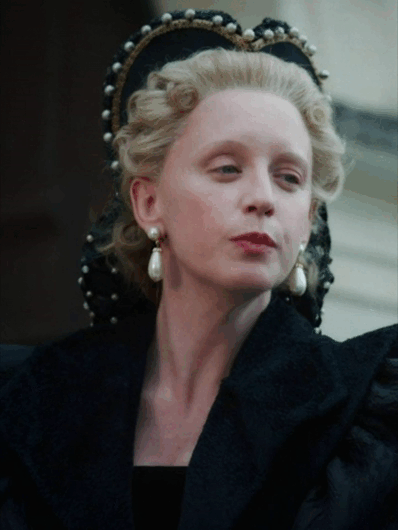

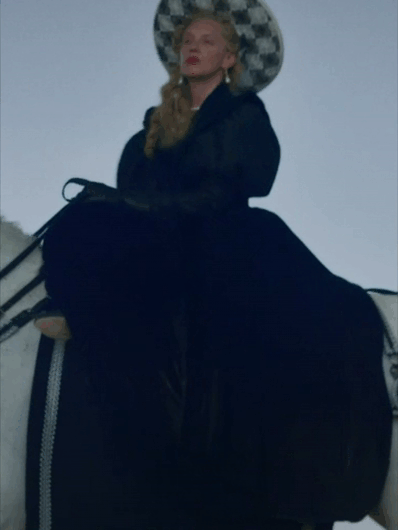
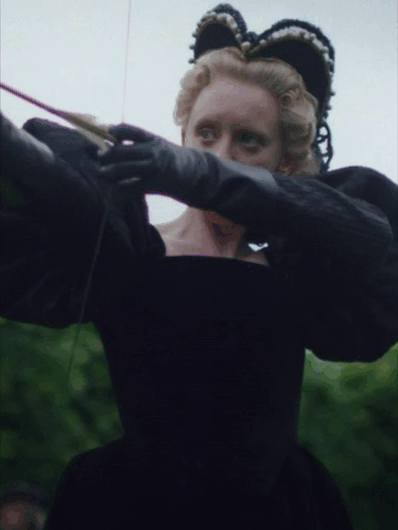
The Serpent Queen + Costumes
Diane de Poitiers' black riding habit in Season 01, Episode 02.
// requested by anonymous
#The Serpent Queen#Diane de Poitiers#period drama#perioddramaedit#costume drama#costumes#costumesource#1500s#16th century#black#Fontainebleau#Île-de-France#France#Europe#requests
64 notes
·
View notes
Text
Marguerite de Navarre’s discussion of courtly love, La Coche (The Coach) (1541–42), was dedicated to [Anne de Pisseleu]. The relations between Marguerite and Anne were complex. Sometimes described as rivals, they often shared tactical objectives in court politics and, though Marguerite was waspish about many others in her talks with foreign envoys, she never was about Anne. There was clearly also some sympathy between them in matters of religion, which in Anne’s case developed later into Protestantism. Marguerite’s poem is a discussion about the miseries and pains of love, which are submitted by Marguerite to the arbitration of Madame d’Étampes in the absence of her brother the king. The text also contains an extended eulogy of Anne (though not named directly) in which she is likened to ‘a sun midst stars who spares nothing for her friends, nor stoops to vengeance on her foes’. Marguerite addresses her as cousin and mistress. There are several illuminated copies, the best known in the Musée Condé showing Marguerite presenting the work to Anne."
-David Potter, "The Life and After-Life of a Royal Mistress: Anne de Pisseleu, Duchess of Étampes"
#historicwomendaily#anne de pisseleu#french history#16th century#my list#Marguerite of Angoulême#marguerite de navarre#marguerite de valois#I don't know what to tag her :(#Anne and Marguerite (+Diane de France) are the most interesting women of 16th century France to me#so I love that both of them were allies and seem to have gotten along#my post
16 notes
·
View notes
Text

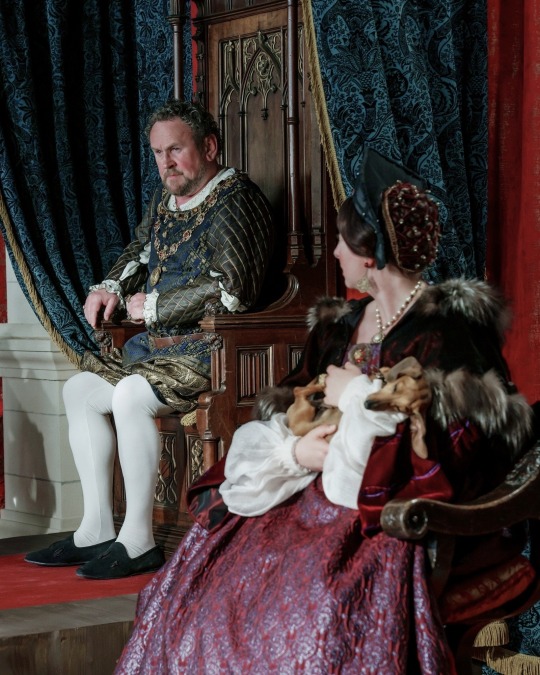



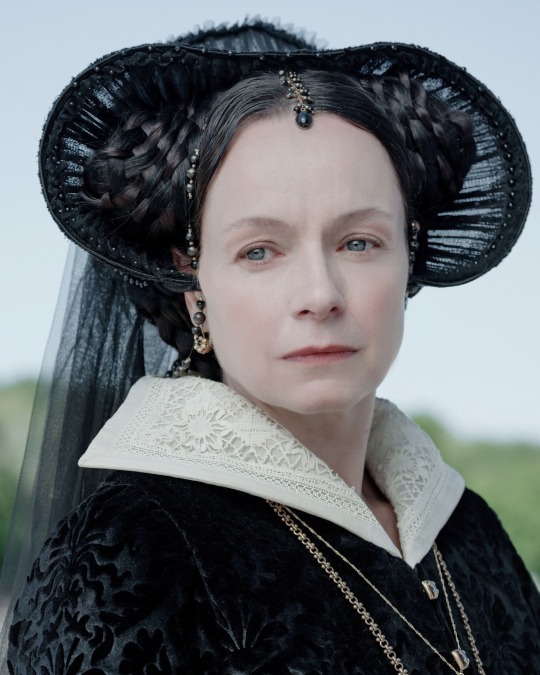
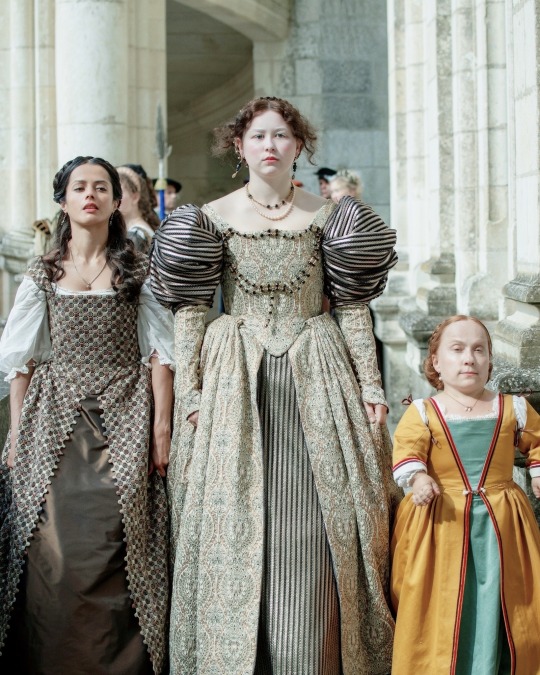


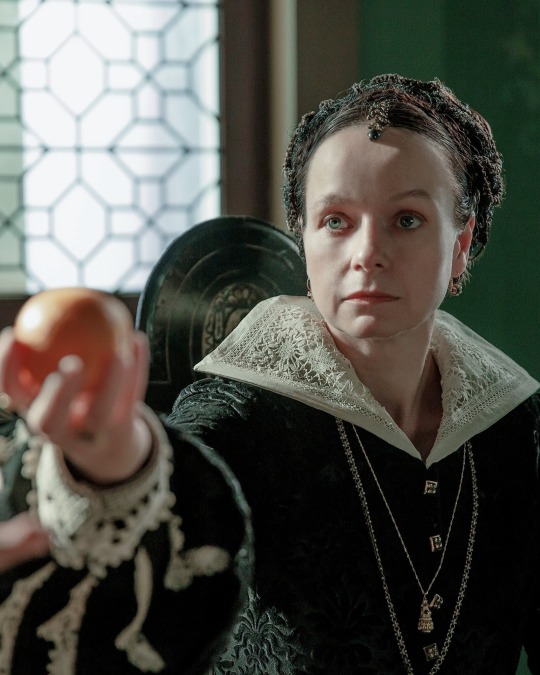
The Serpent Queen promo stills
1.02 (2022-)
58 notes
·
View notes
Text
New stills from THE SERPENT QUEEN (2022)
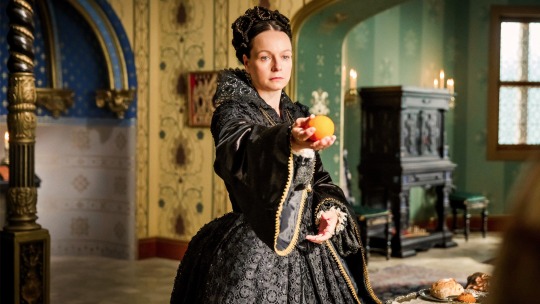
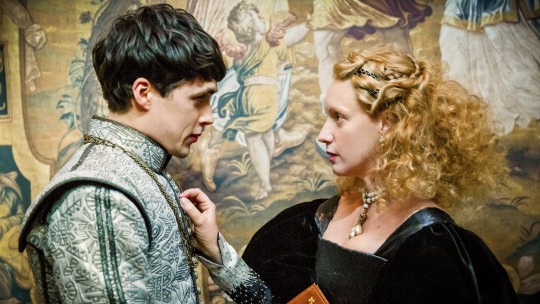


Credits: themoviesdb
#ok it kinda looks good (?)#history#perioddramascenes#medici family#catherine de medici#catherinedemediciedit#the serpent queen#theserpentqueenedit#reign#medici the magnificent#renaissance#florence#starz#samantha morton#liv hill#perioddrama#mediciseries#diane de poitiers#henri ii#francis i of france#dark acadamia aesthetic#aesthetic
89 notes
·
View notes
Note
How come Catherine de Medici loved Henri so much even though he (cheated and) significantly favoured Diane de portiers, and also slighted her at time like with the castle she wanted and he didn’t give it to her?
It is the accepted narrative that Catherine de’ Medici was obsessively in love with her husband King Henri II, despite the fact that--or perhaps because, depending on who you’re reading--he was clearly in love with Diane de Poitiers. It’s not terribly different from the stories told about Juana of Castile, daughter of Ferdinand and Isabella and heiress to Castile. She was married to Philip IV Hapsburg, duke of Burgundy, who was reportedly both very handsome and a womanizer. The stories claim that Juana was so wildly in love with her husband that, after he died from illness, she carried his corpse with him wherever she travelled, and renounced the throne of Castile out of grief and madness. In fact, she is popularly known as Juana la Loca or Juana the Mad.
This is almost certainly propaganda spread both during Juana’s lifetime and after her death. Whatever her feelings were for her husband, he repaid them by conspiring with her father King Ferdinand to dethrone Juana in favour of her young son Charles so they could collectively rule on his behalf. Similarly, much of what we know of Catherine de’ Medici’s feelings for her unfaithful husband comes from the same sources that tell us she was a poisoner and the centre of webs of intrigue and murder.
We know Catherine never remarried or showed any interest in remarrying after Henri’s shocking death in 1559, but there are plenty of reasons for that. She and Henri were married when both of them were 14 years old, and for the first ten years, Catherine was blamed for the couple’s inabiilty to conceive any children. Henri took multiple mistresses at first, but finally settled on Diane de Poitiers, who he treated with far greater respect and affection than his wife. In January 1544, after nearly eleven years of marriage, Catherine finally gave birth to the long-awaited heir to the throne. After him, she had nine more children who survived infancy, and nearly died giving birth to two more.
We also know that she adopted the image of a broken lance and the motto “lacrymae hinc, hinc dolor“ (”from this come my sorrow and tears”) after his death in a jousting accident. But it’s worth remembering that her position as Regent of France on behalf of three of her sons over the next half-century at least partly depended on her keeping up an obvious connection to the previous Valois king. How much of Catherine’s grief was real and how much was politically motivated, we honestly can’t say. But she was an extremely clever woman who spent years flying under the radar before ending up all but ruling France, so she was certainly adept at playing dangerous games.
#history#catherine de' medici#16th century#france#henri ii#diane de poitiers#juana of castile#philip iv hapsburg
29 notes
·
View notes
Text

The Young Pope (2016)
#2016#film#series#TV show#television#The Young Pope#Jude Law#Lenny Belardo#Pius XIII#Diane Keaton#Sister Mary#Silvio Orlando#Cardinal Voiello#Ludivine Sagnier#Esther#Cecile De France#Sofia#St. Peter's Basilica#Vatican#Vatican City#Rome#Italy
5 notes
·
View notes
Text
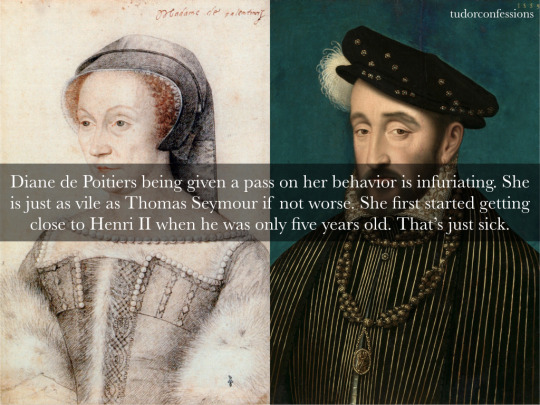
31 notes
·
View notes
Text
Sob o sol da Toscana

Na minha cabeça, existe um pacto cinematográfico reinante em Hollywood: os filmes da mulher divorciada. Essa categoria é apenas uma das extensões de romances de banca de revista (coleções Sabrina, Julia e Bianca) e séries estilo dorama — a versão atualizada da divorciada geração Z. No cinema, o último grande expoente dessa xaropada com bilheteria significativa provavelmente foi Comer, rezar, amar. Mas não pesquisei profundamente e obrigada, pois não quero. O filme da mulher divorciada mostra sempre uma mulher branca superando os desafios da maturidade, sobretudo pós-relacionamento. Ela não necessariamente tem que ser uma mulher divorciada, ela pode ser Julia Roberts em O sorriso de Monalisa, por exemplo: à frente do seu tempo, tentando mostrar às suas alunas que elas não precisam de macho para serem felizes e tá tudo bem. Invariavelmente, você termina esse tipo de filme suspirando, com a ilusão de ter sido muito empoderada naquelas duas horas. Você tem trinta anos ou está cada vez mais próxima dos quarenta e algum filme dessa categoria vai te fazer chorar.
Sob o sol da Toscana, filme de 2003, segue direitinho a receita do “filme de mulher divorciada”: Frances, interpretada por Diane Lane, é uma escritora e crítica literária norte-americana que, logo no início do filme, descobre a infidelidade do marido e sai da casa na qual eles compartilharam uma vida inteira, porque no bairro tem boas escolas e o bonitão engravidou a amante (risos). As melhores amigas de Frances, casal de lésbicas e médicas do elenco de Grey’s anatomy (é sério), ficam com pena e lhe presenteiam com passagens para uma excursão gay pela Itália. Irrecusável, convenhamos, mas Frances faz c* doce até se dar conta de que não há nada a perder para quem já perdeu tudo mesmo, né? Então, ela vai.
Chegando lá, persegue uma divorciada promovida a categoria de viúva e que faz cosplay de Sylvia tomando banho na fonte em La Dolce Vita (essa cena de Fellini é linda, mas acho insalubre a reprodução). Fascinada por Katherine (Lindsay Duncan), Frances segue seu conselho e compra uma casa gigantesca, caindo aos pedaços, que precisa de muita reforma. Contrata três poloneses que falam pouquíssimo tanto inglês quanto italiano e, com muita paciência e espírito aventureiro, descobre a dor e a delícia de viver sob o sol da Toscana, tal como o título sugere. A história do filme é inspirada no livro homônimo de Frances Mayes, que também é sua biografia.
Todos, absolutamente TODOS os homens italianos ao redor de Frances desejam seu corpo nu. E tudo bem— é Diane Lane no auge da beleza. Eu, que tenho três italianos no currículo, assino embaixo que são todos maravilhosamente safados. Frances, no início, atira para todos os lados, até mesmo para cima do corretor que lhe vendeu a casa, um homem casado e pai de dois filhos. Mas, no decorrer do filme, ela se incomoda com o assédio nas ruas e é então que encontra Marcello (claro, que outro nome teria?): um belo e jovem italiano, alto, de olhos azuis, que veste branco tal como um malandro carioca. Só que Marcello mora lá na p*ta que pariu da Itália; no que Frances vive uma série de desencontros com ele enquanto sua amiga, Patti (Sandra Oh), se instala em sua casa, grávida, porque foi abandonada pela esposa e agora temos um filme sobre duas divorciadas.
Frances, que nessa altura da história já mudou o nome para Francesca, não está em casa quando Marcello tenta visitá-la. No mesmo dia, nasce a bebê de sua amiga, mais duas semanas se passam, Frances compra um vestido branco e pega um barco para a outra ponta da Itália, porque ela quer encontrar Marcello de novo e é muito esforço por um macho. Como um bom homem italiano que não perde tempo, Marcello já está com outra, no que Frances volta para casa com o rabo entre as pernas.
Além das paisagens italianas, sempre divinas, já falei que deve ser UMA DELÍCIA filmar na Itália (Jude Law em O talentoso Ripley que o diga, pois estava no auge da beleza também), o único destaque válido desse filme é a presença de Katherine: ela acha que foi amante de Fellini, ela recria as cenas de Fellini, ela veste preto como a teoria que criei da “viúva Dolce & Gabbana” (vestido preto colado no corpo, decotado, comprimento midi, um chapéu enorme, um pouco de renda e provavelmente é alguém que matou o marido e está prestes a fugir do país após o enterro — é assim que quero me vestir quando envelhecer), ela chora cada amor que não vinga e se recompõe com uma taça de vinho. Eu queria um filme só sobre ela. Katherine deveria ser a protagonista de Sob o sol da Toscana. E ainda é tratada pelos vizinhos como uma senhora excêntrica digna de deboche, coitada.
Sob o sol da Toscana é uma Sessão da tarde disponível na Netflix que, na real, decidi rever. Mas esse filme costumava passar nas madrugadas da Globo, de vez em quando depois do Oscar, da exibição de festividades do ano-novo, ou na noite em que era anunciado “acerte seu relógio, entramos no horário de verão”. É um filme típico da Itália sendo retratada pelo olhar americano: o verão é eterno, o calor é imenso, o amor está em todo lugar, mas ali é onde está o recomeço. Frances desejava em seu lar um casamento e a formação de uma família — e Deus escreve certo por linhas tortas, pois tudo se cumpre, ainda que de maneira inesperada. No final, um prêmio de consolação aleatório em forma de homem surge, por ela ter aprendido a se amar e se conhecer. Mas eu ainda preferia o Marcello.
#blog#cinema#sob o sol da toscana#diane lane#sandra oh#netflix#frances mayes#itália#toscana#2003#comer rezar amar#o sorriso de monalisa#julia roberts#federico fellini#la dolce vita
3 notes
·
View notes
Text
Anne de Beaujeu
Anne de Beaujeu (Anne de France, 1461-1522)
Unofficial regent of France and duchess of Bourbon

Anne de Beaujeu provides an example of female political authority in a country where the Salic Law prevented women from assuming the crown. She also illustrates the tension between an increasingly centralized monarchy on the one hand and feudal independence on the other, having supported both causes at different times in her life. Probably born in 1461, Anne de Beaujeu was the oldest of the surviving children of Louis XI, king of France, and the one said to resemble him most intellectually and temperamentally. When this king died in 1483 leaving a thirteen-year-old Charles VIII on the throne, Anne and her husband, Pierre de Beaujeu, as his guardians, assumed control. In so doing, they resisted Louis d'Orléans, the next in line to the throne, who wished to be named regent. Louis and his supporters sought help from the estates-general who met in 1484 but who ultimately supported Anne's cause. Referred to as Madame la Grande (Grand Madam), Anne was recognized by the court and by foreign emissaries as the person actually ruling France during the early years of Charles's reign.
In 1488 she and Charles VIII squelched a noble uprising, the Guerre Folle (the Foolish War) led by Louis d'Orléans and Francis II duke of Brittany. Charles then married the new duchess of Brittany, Anne, to ensure the duchy's loyalty to France. Meanwhile Pierre de Beaujeu's two older brothers had died, leaving Pierre with the Bourbon inheritance. Anne and her husband were now the richest and most powerful nobles in France. In 1491, after the loss of one infant and fifteen years of childlessness, Anne gave birth to a daughter, Suzanne. As Charles VIII grew increasingly independent of his older sister, Anne redirected her attention to her own lands and feudal duties, though she remained his advisor while retaining her ties to the court. When Charles died suddenly in 1498 leaving no heirs, Louis d'Orléans became king of France. Neither his previous attacks on the crown nor his well-known personal vices inspired confidence in his subjects, so the support of Anne de Beaujeu and her husband were instrumental in a smooth accession to the throne. Anne agreed to overlook their antagonistic past and did not hinder the annulment Louis immediately requested from her physically disabled sister, Jeanne. In exchange, Louis XII waived the royal rights to the Bourbon inheritance in the case that Anne and Pierre did not have a male heir. Once all this had been established, the Bourbon's relationship with Louis XII and his new queen, Charles's widow Anne de Bretagne, became quite cordial. Anne de Beaujeu no longer held any direct influence, however, over the governance of the French state.
In 1504 or 1505, after the death of her husband and before she arranged a marriage for her daughter, Anne wrote Suzanne a book of lessons, Les Enseignements d'Anne de France, duchesse de Bourbonnois et d'Auvergne, à sa fille Susanne de Bourbon, modeled on the book that Louis IX had written for his daughter, the one her own father had written for Charles, and the writings of Christine de Pizan. Anne's version contains conventional advice on the appropriate behavior for noblewomen. During her unofficial regency, Anne had overseen the education of many young noblewomen at court, including Louise de Savoie, Marguerite d'Autriche, and Diane de Poitiers. The humble feminine figure that emerges from the Enseignements, however, seems at odds with their independent author. More easily recognizable are the anxieties about life as an older widow distant from court. The Enseignements ends with a tale about a noblewoman who bravely sacrifices her only child for the honor of her family and the interests of the king. Suzanne was, in fact, married shortly thereafter to a cousin to protect the integrity of the Bourbon inheritance.
In contrast to the moral of her tale, however, the interests of a noble family and those of the crown did not always overlap. Before she died, Anne witnessed the opposition of two adults whom she had raised from childhood: her son-in-law, the connétable de Bourbon, and Louise de Savoie, mother of Francis I, successor to Louis XII. Louise and her son, suspicious of the wealth and power of the connétable, the Bourbon heir, challenged his inheritance. After losing the domain that Anne had so carefully built up and defended during her lifetime, the connétable, perhaps with Anne's bitter approval, responded by betraying the French king Francis I- the other cause that Anne had defended so staunchly during her brother's reign. Anne died in 1522, before this ultimate betrayal.
Emily Thompson in Encyclopedia of Women in the Renaissance.
#xv#xvi#anne de france#anne de beaujeu#regents#duchesse de bourbon#louis xi#charles viii#pierre de beaujeu#louis xii#françois ii de bretagne#anne de bretagne#la guerre folle#suzanne de bourbon#sainte jeanne de france#louise de savoie#marguerite d'autriche#diane de poitiers#charles iii de bourbon#le connétable de bourbon#françois i#proof that anne approved of this ? i didn't find anything#the connétable's betrayal is a complex story#one can point fingers at françois i and louise de savoie too#emily thompson#encyclopedia of women in the renaissance
17 notes
·
View notes
Text
About the first episode of The Serpent Queen, I just want to say:

17 notes
·
View notes